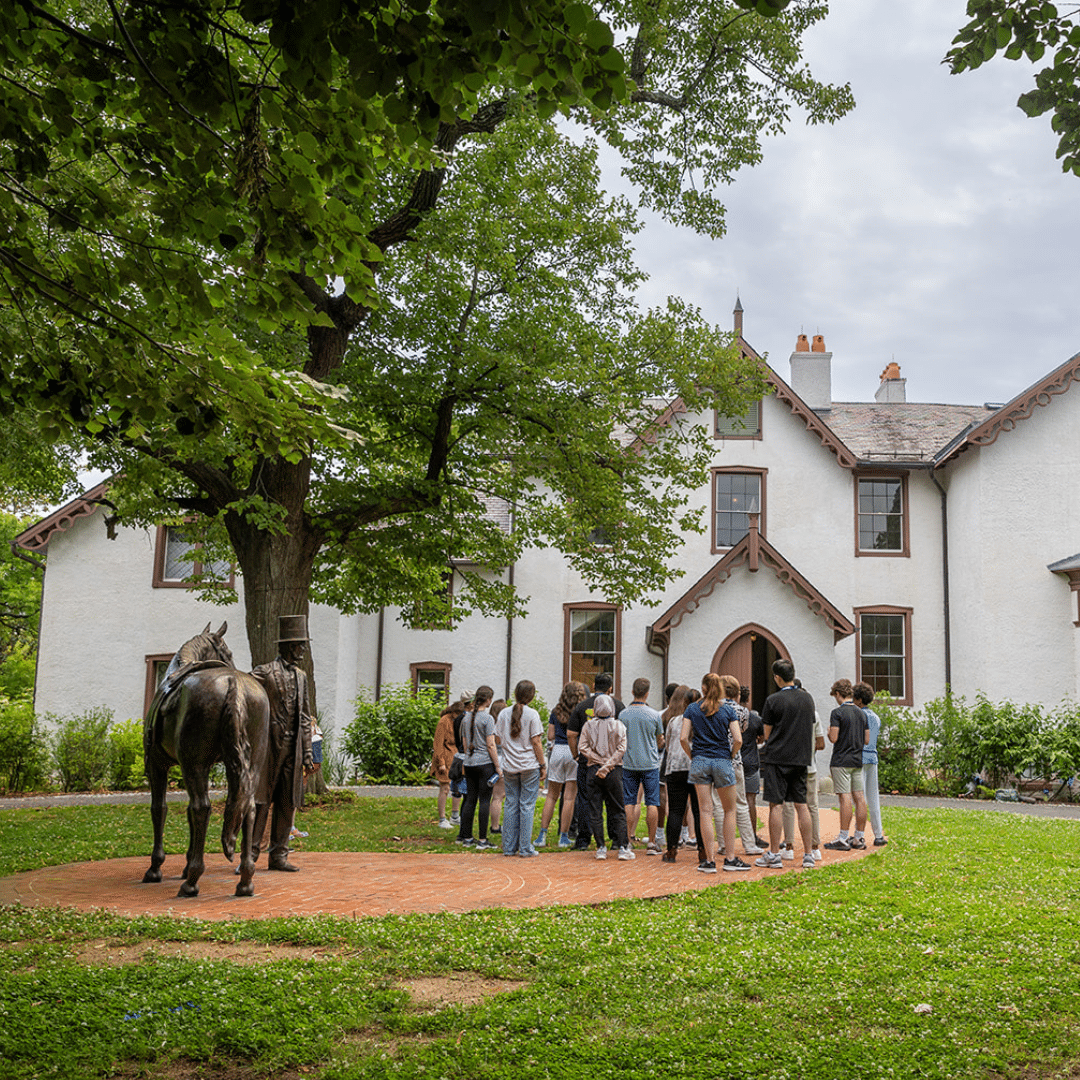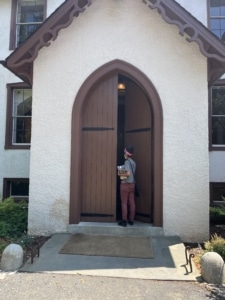
As a steaming August melted into a golden September, Senior Marketing & Communications Manager Rebecca Kilborne sat down with log-time DC public school teacher and current Cottage Museum Program Associate Rachel Woodson to talk about teaching Abraham Lincoln and beyond.
It’s back to school time! As a longtime teacher, what feelings does this time of year invoke in you?
I love the beginning of the school year! It always makes me think of a fresh start – perhaps in the way some people may think of January 1st. Even as a child, I always felt that there was something so exciting about this time of year. I loved the anticipation of having a new teacher (or teachers), new subjects, new learning, and seeing my classmates again after a nice long summer. As a teacher, I have felt the same way.
What was your favorite subject when you were in school?
When I was in elementary school it was, hands down, reading and history. My teachers at John Greenleaf Whittier (who was an abolitionist, by the way) Elementary School made sure that we knew our history – there was a pride in it.
I will always remember my fantastic first grade teacher, Ms. Segre, through to my 6th grade teacher, Ms. Pierce, making sure that history was an important part of what we learned. In junior high school I took Ancient and Medieval History, taught by Ms. Balkisoon. I still remember some of the projects that we did in that class.
I enjoyed history outside of school, too. I loved the museums and historic sites that my family would visit. I also always looked forward to my visits to the library so that I could check out as many historical fiction books that I could! I also loved hearing all the stories my relatives would tell about their lives and the lives of long-gone members of our family.
Can you tell us a little bit about your teaching career?
I have been a high school and a middle school social studies teacher in D.C. I have taught African American History, Ancient and Medieval History, D.C. History, Global Perspectives, U.S. History, World History and U.S. Government.
How did you find yourself at President Lincoln’s Cottage?
It’s interesting how I made my way to President Lincoln’s Cottage. I had been following the D.C. Public Library Foundation’s Uncensored Scavenger Hunt “Freedom is Not Guaranteed.” DCPL and the foundation placed books in different spots all over the city. These were books that had been either challenged or banned in places throughout the U.S. Each day the foundation would provide a clue on the DCPL website.* One clue led me to the Cottage. I found the book How the Word is Passed by Clint Smith in one of the fair trade bags that is sold in the gift shop. My now supervisor, Cameron Walpole, was in the gift shop and we struck up a conversation about history and education. She asked if I might be interested in applying to work at the cottage. I went through the application and interview process, was offered the job and I’ve been here ever since.
What is your favorite thing to teach here at the Cottage?
I think it is very important for visitors to understand the complexities of the Emancipation Proclamation. Many people proclaim that “Lincoln freed the slaves!” It is more complicated than that, though. So many people don’t know that not all of those who were enslaved in the United States were freed by the proclamation. Many others don’t know that a large number of those who were freed by the proclamation were freed on paper but not in reality. Not until long after January 1, 1863, when the Proclamation was made public, were all of those who were enslaved actually free. This is important to understand and so I think this is the most important thing that I teach at the cottage.
Beyond what I teach, I love that we always hope that our visitors are inspired to begin or continue to make positive changes in their community, our country, and the world.
What is one thing we can all learn from Abraham Lincoln?
Listening to the perspectives of many people is a wonderful thing that we can all take away from Abraham Lincoln’s life. He surrounded himself with people who had quite a diversity of thinking on quite a number of issues. The title of one of Doris Kearns Goodwin’s books is Team of Rivals. There were members of his cabinet that had run against Lincoln during his presidential campaign. His cabinet had such a wide view of what to do about so many things that happened during Lincoln’s presidency. He did not place himself in a bubble. He did not surround himself with “yes” men. He also was constantly speaking with all kinds of “ordinary” people that he met – those who sought him out, those who he sought out and those he happened to meet during his commute or his wider travels.
Do you have any book recommendations for people interested in Lincoln and/or social justice?
There are so many Lincoln books! I think that I would have to say Lincoln Sanctuary by Matthew Pinsker would be my favorite book to recommend, especially if one is interested in Abraham Lincoln’s time at the cottage.
Thanks so much, Rachel! We know it’s going to be a wonderful year at the Cottage full of enthusiastic learners- young and old! Thanks for all that you do here.
You’re welcome!

Rachel Woodson entering the Cottage
*The books that were part of last year’s scavenger hunt were:
- All Boys Aren’t Blue by George M. Johnson
- How the Word Is Passed by Clint Smith
- With the Fire on High by Elizabeth Acevedo
- The Color of Law: A Forgotten History of How Our Government Segregated America by Richard Rothstein
- The Color Purple by Alice Walker
- A Snake Falls to Earth by Darcie Little Badger
Dian Holton was the artist of the special covers for the six books.
D.C. Public Library has been awarded the 2024 National Medal for Museum and Library Service by the Institute of Museum and Library Services. The medal is the nation’s highest honor, celebrating institutions that make significant and exceptional contributions to their communities.
